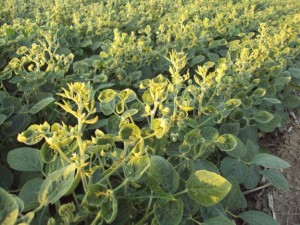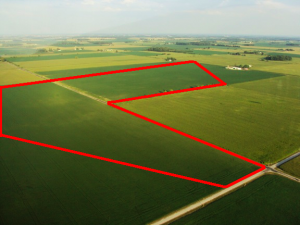Identify Damage
Symptoms, such as leaf cupping, puckering, or crinkling, are frequently observed following exposure to synthetic auxin herbicides, like 2,4-D and dicamba. Like many crops, soybeans are highly sensitive to synthetic auxin herbicides. As little as 1/10,000th of a field use application rate of dicamba can cause leaf cupping symptoms on newly emerged soybean leaves.¹
In addition to causing severe injury to newly emerging soybean leaves, synthetic auxin injury to soybeans can also lead to delayed maturity, decreased yield, and decreased germination of harvested soybean seed. Field studies have shown applications of dicamba at levels as low as 1/300th of the field rate for soybeans caused statistically significant field losses of broadleaf crops. Yield reductions are especially intense when herbicide applications are made later in the growing season. The late drift of dicamba, during bloom, has been demonstrated to cause reductions of up to 77% in marketable crop when applied at 1/100th of the soybean field rate.²
SOCC is very concerned about a proposal from Monsanto that would permit the application of synthetic auxin herbicides on synthetic auxin tolerant crops late in the growing season. Because synthetic auxin tolerant crops will be grown in close proximity to unmodified broadleaf crops like soybeans and tomatoes, SOCC anticipates extensive non-target plant damage.
Dicamba Drift Destroys Soybeans in Indiana
This dicamba drift damage occurred this summer (2012) to a soybean crop in Indiana. Note the yellow color, the cupping, puckering and crinkling of the soybean leaves. This drift incident caused a severe reduction in marketable yield.
This is a birds-eye view of the devastation caused by this drift incident. Notice the damaged area bounded by the red square.
¹Reichers, Dean and Kelley, Kevin, Stressed-Out Soybeans: The Impact of Off-Target Plant Growth Regulator Herbicide Injury, University of Illinois Extension (2004).
²Doohan, Doug and Koch, Tim, Effect of Simulated Dicamba and 2, 4-D Drift on Processing Tomatoes, Ohio State University/OARDC (2010).


